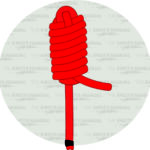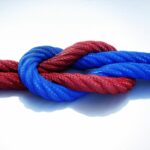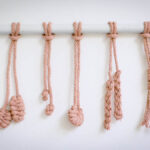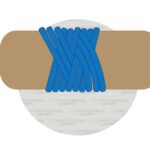The monkey fist knot forms a large spherical shape at the end of a rope with many faces. A round item, like a ball, sits within the center of the knot. The item makes the knot heavy and easier to throw. A monkey’s fist knot is a popular knot that almost everyone is familiar with, even if they don’t work with knots.
Sailors used monkey fist knots hundreds of years ago. They acted as heaving lines so crew members could pull two ships together. Today, monkey fists are most commonly used for decorative purposes.
Follow the directions below to learn how to tie a monkey fist knot.
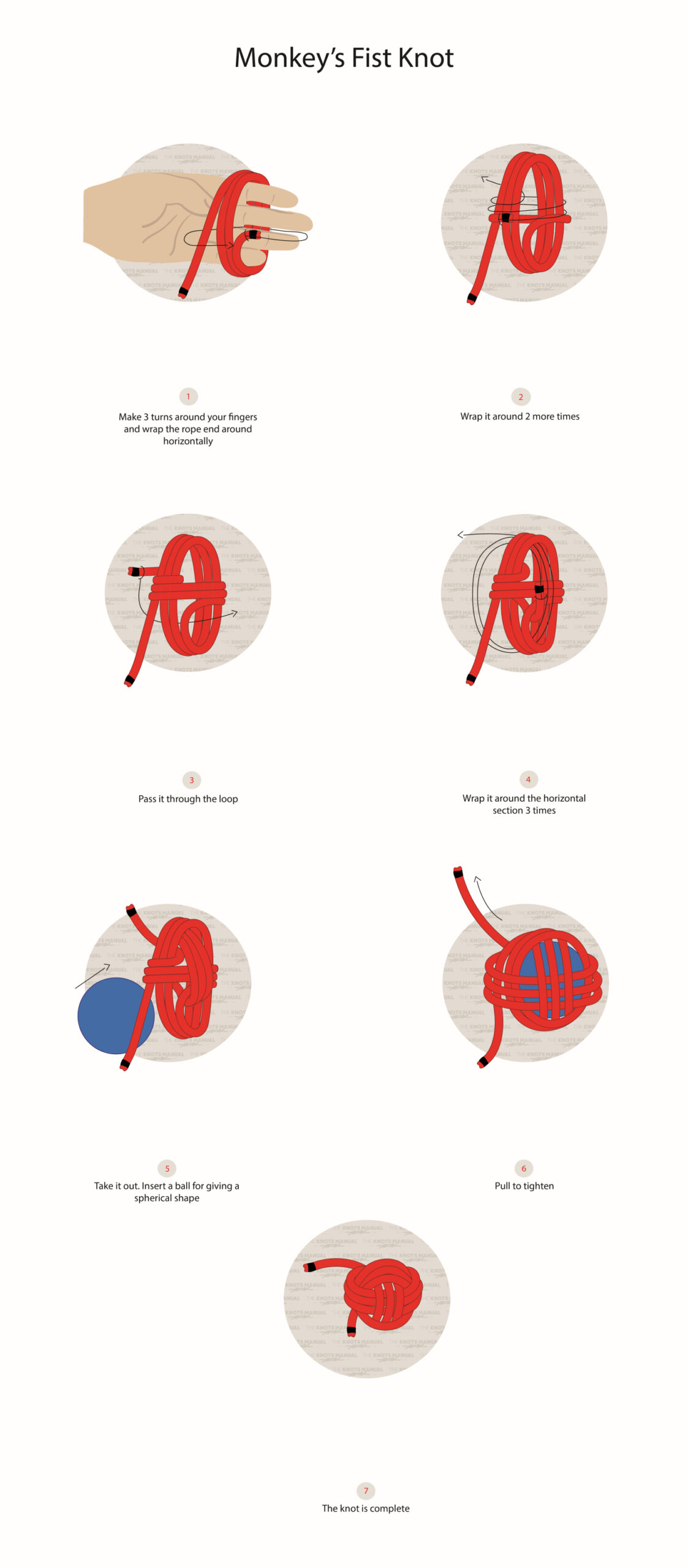
What Is A Monkey Fist Knot?
A monkey’s fist knot, or a monkey paw knot, is a ball-like knot tied at the end of a rope. The large knot acts as a weight and resembles the Turk’s head knot.
Monkey fists get their name from their shape — resembling a monkey clutching its fist.
Monkey Fist Knot Meaning
The Children’s Oncology Camping Association International uses monkey fists with their kids. They say the monkey fist knot sometimes represents friendship. Each monkey fist is slightly different like each person and friendship is different. They have imperfections that are representative of all friendships.
Often, friends spend long periods searching for the perfect marble. Once they find it, they place it at the center of their monkey fist. The marble is representative of their friend’s characteristics. It also symbolizes the strength and beauty that each individual holds inside themselves.
The creator presents their knot to their friend as a gift.
How To Tie A Monkey Fist Knot
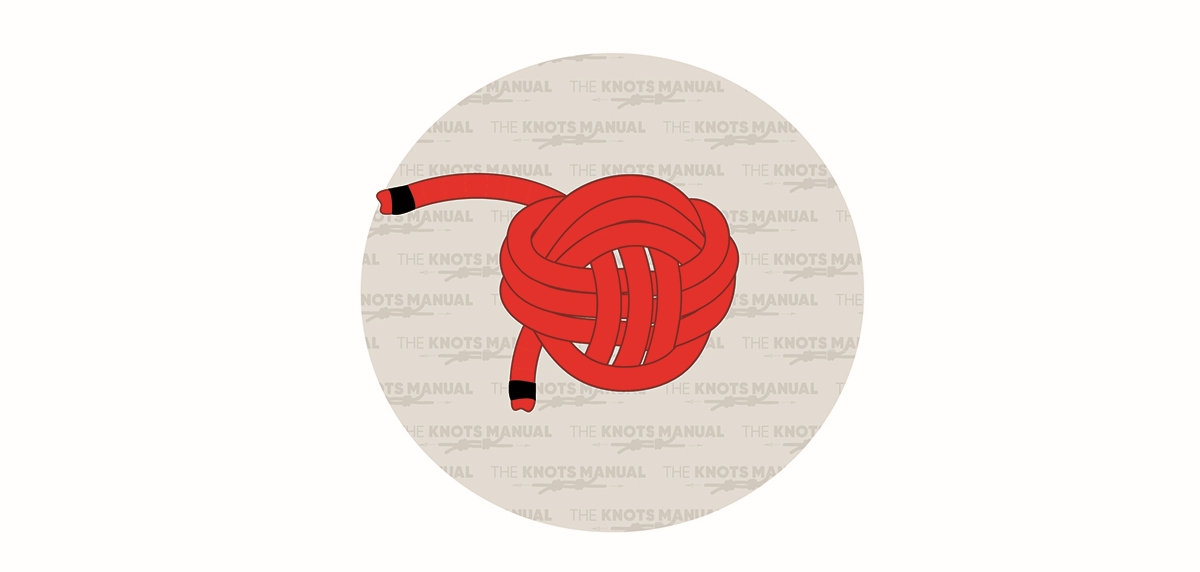
Follow these seven simple steps to learn how to make a monkey fist knot:
Step 1:
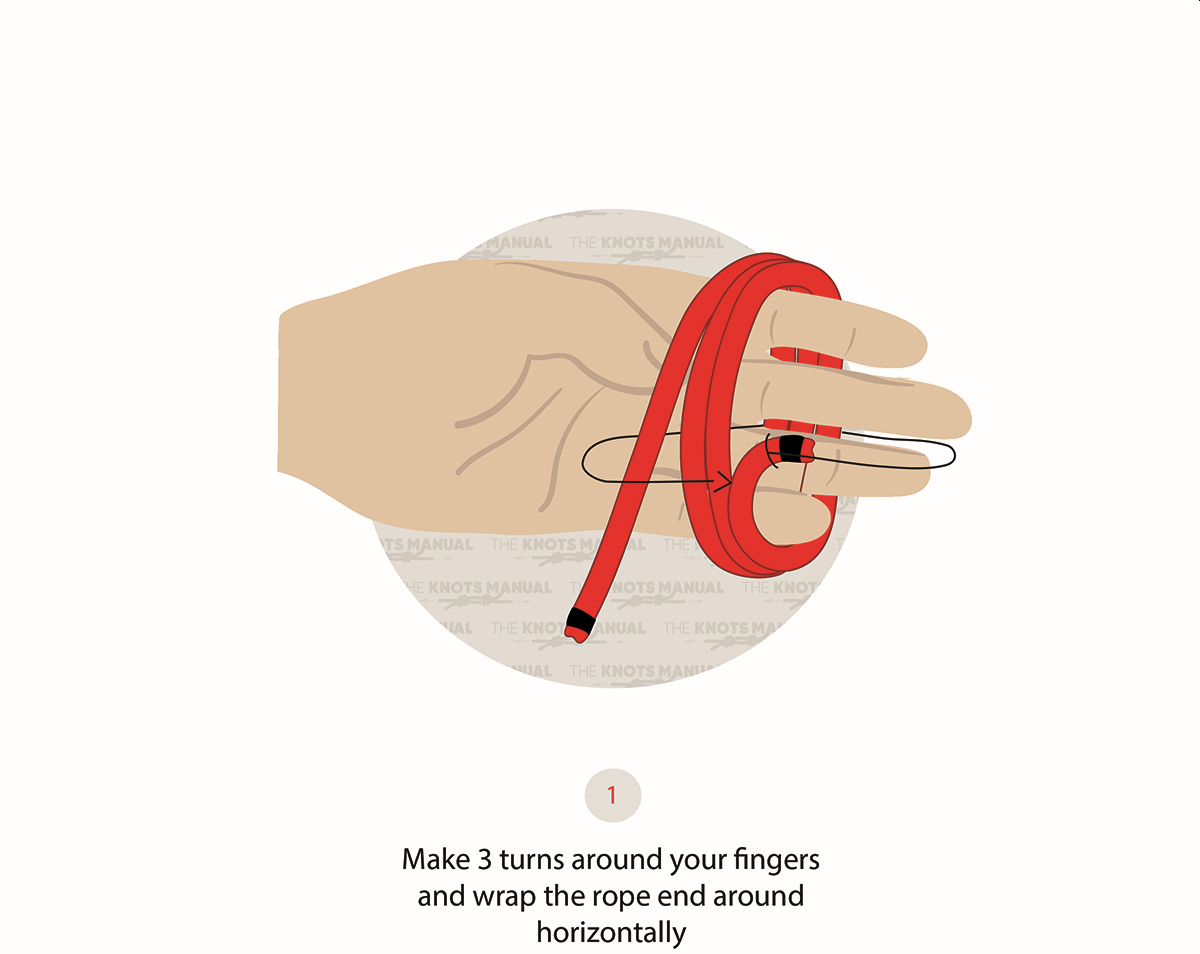
Wrap the rope’s working end around your fingers three times. Wrap the working end around the three loops horizontally. To make the knot stronger, make four wraps instead of three.
Keep the knot loos while creating it — inserting the ball later on will be easier.
Step 2:
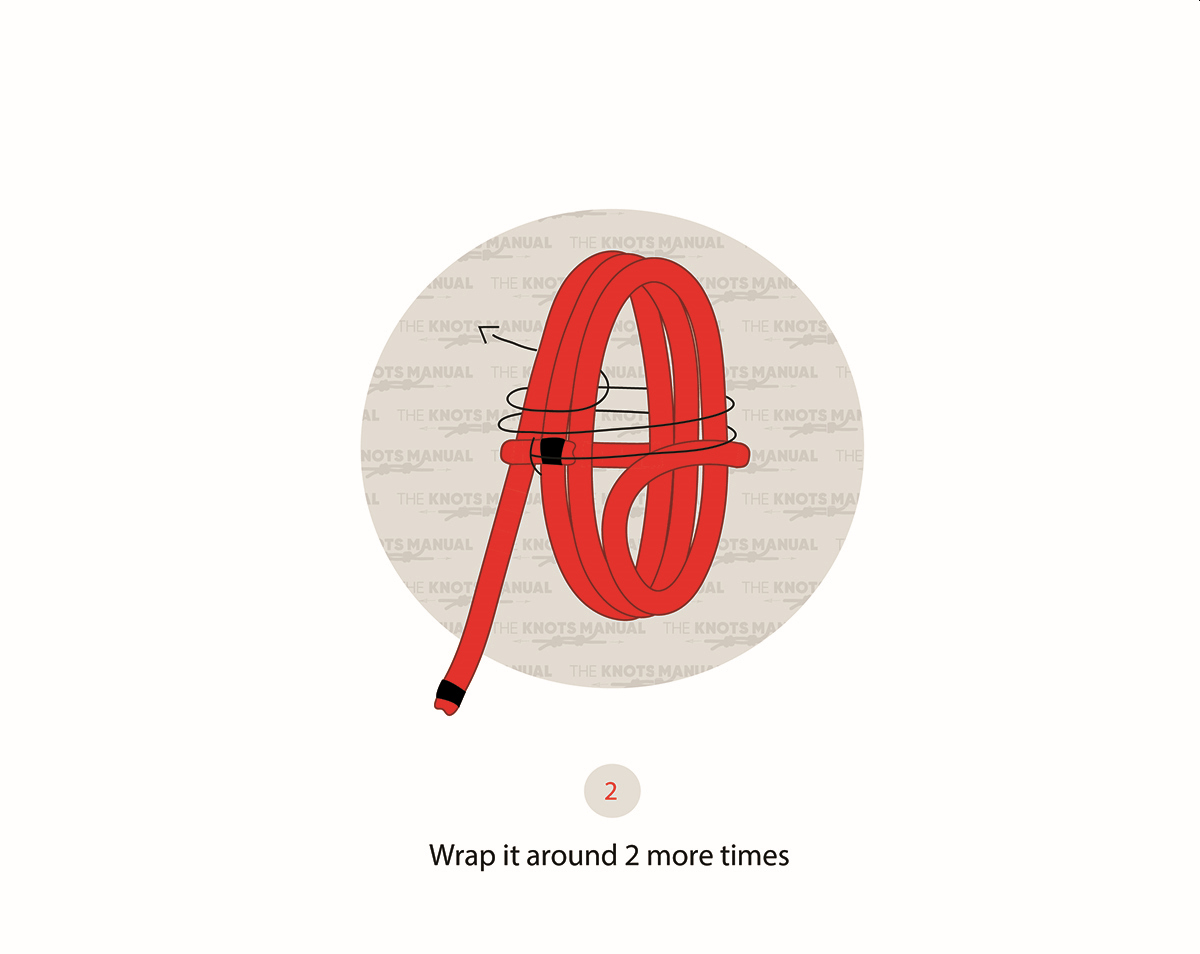
Wrap the working end around the loops horizontally two more times.
Step 3:
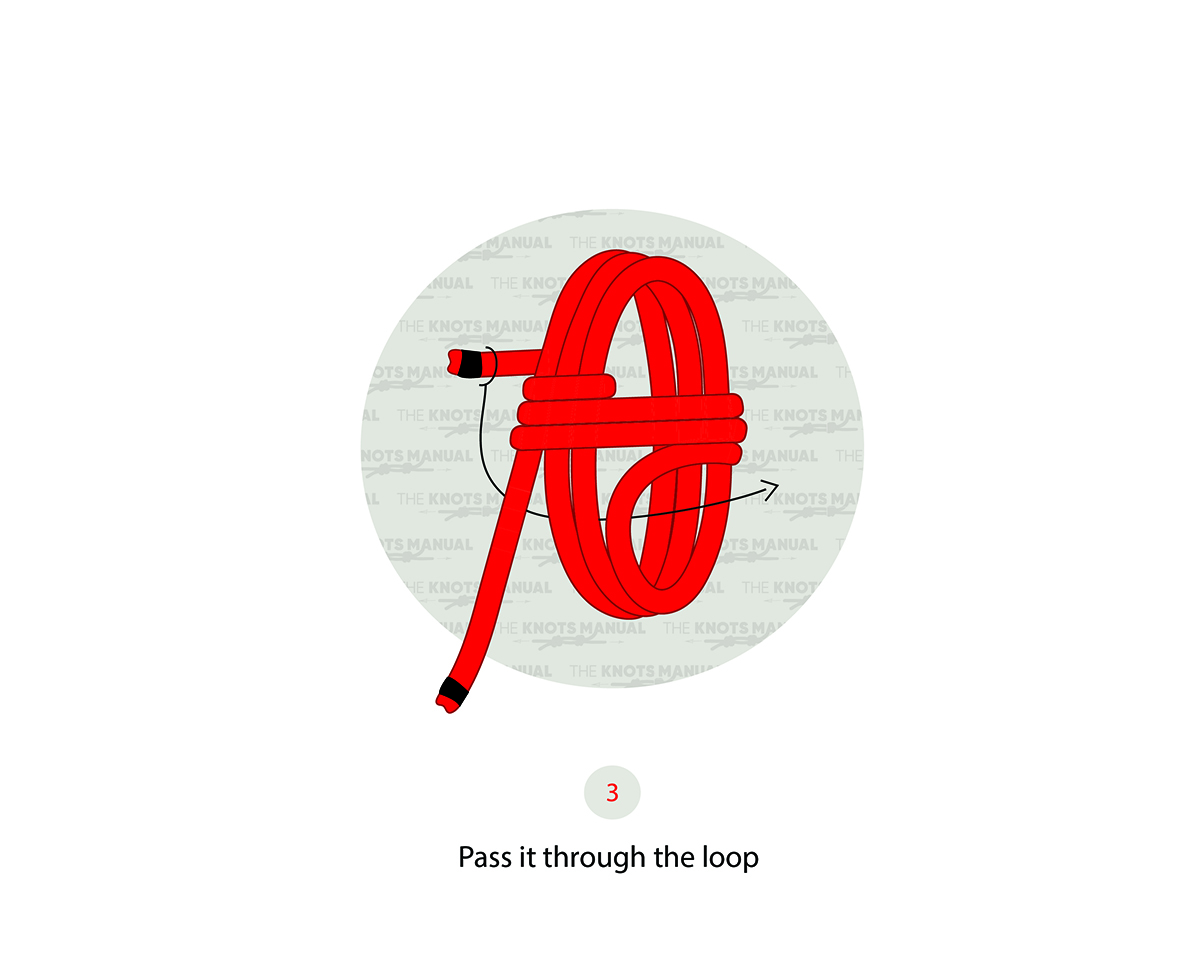
Pass the working end through the loop.
Step 4:
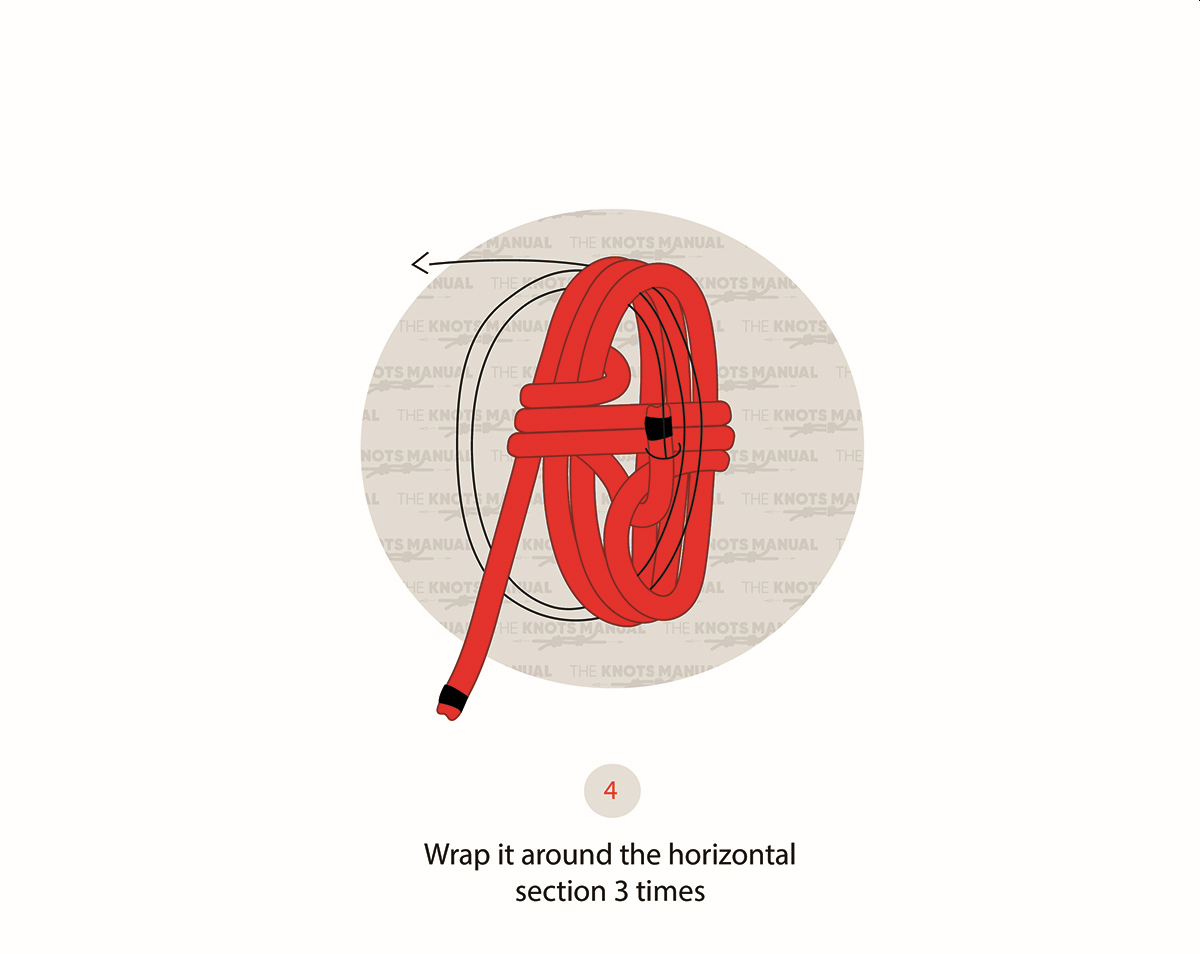
Wrap the working end around the horizontal section of the knot three times.
Step 5:
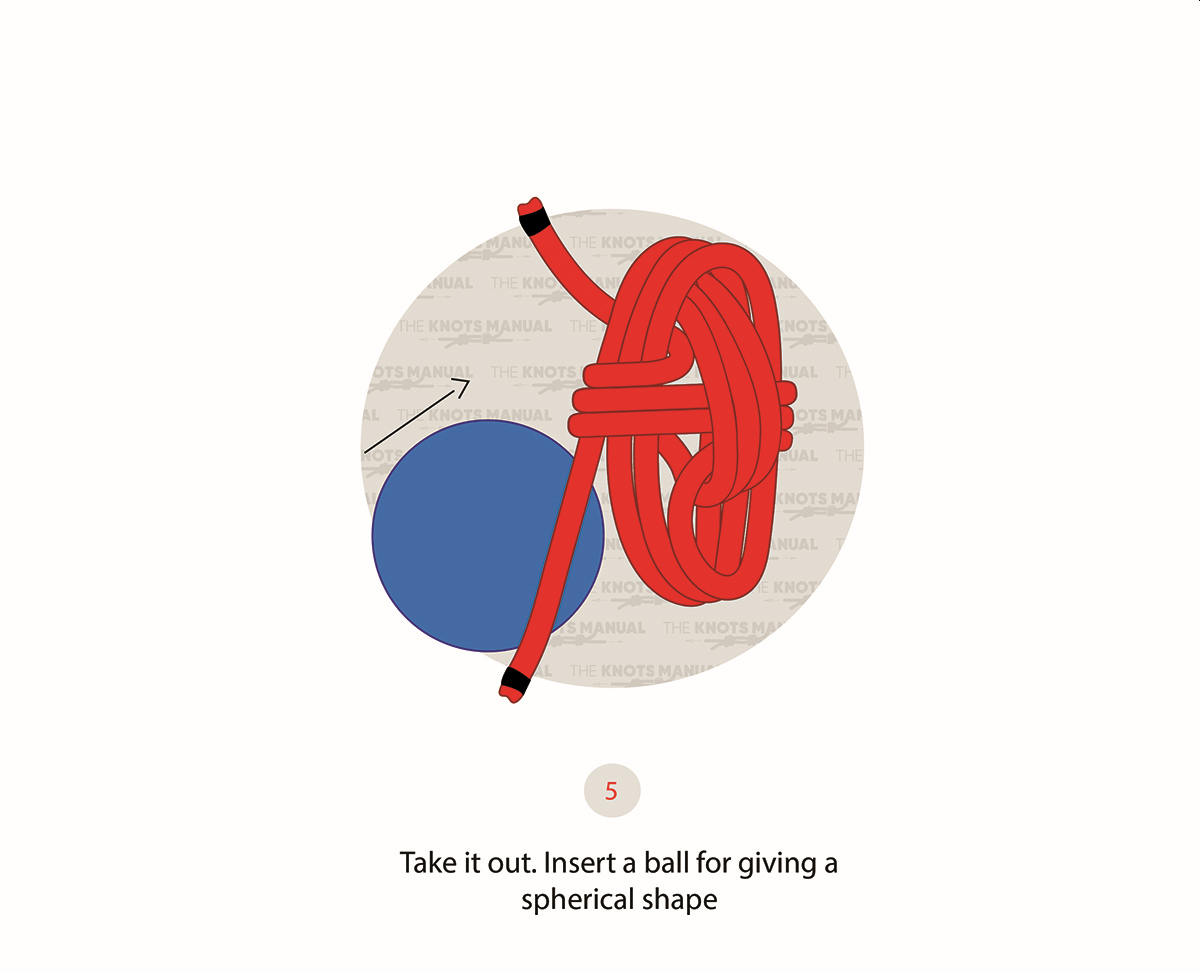
Place a ball inside the knot to give it a spherical structure. Balls are unnecessary for mini monkey fists, like those used to make keychains. Marbles are another good option for users that prefer to use a ball.
Step 6:
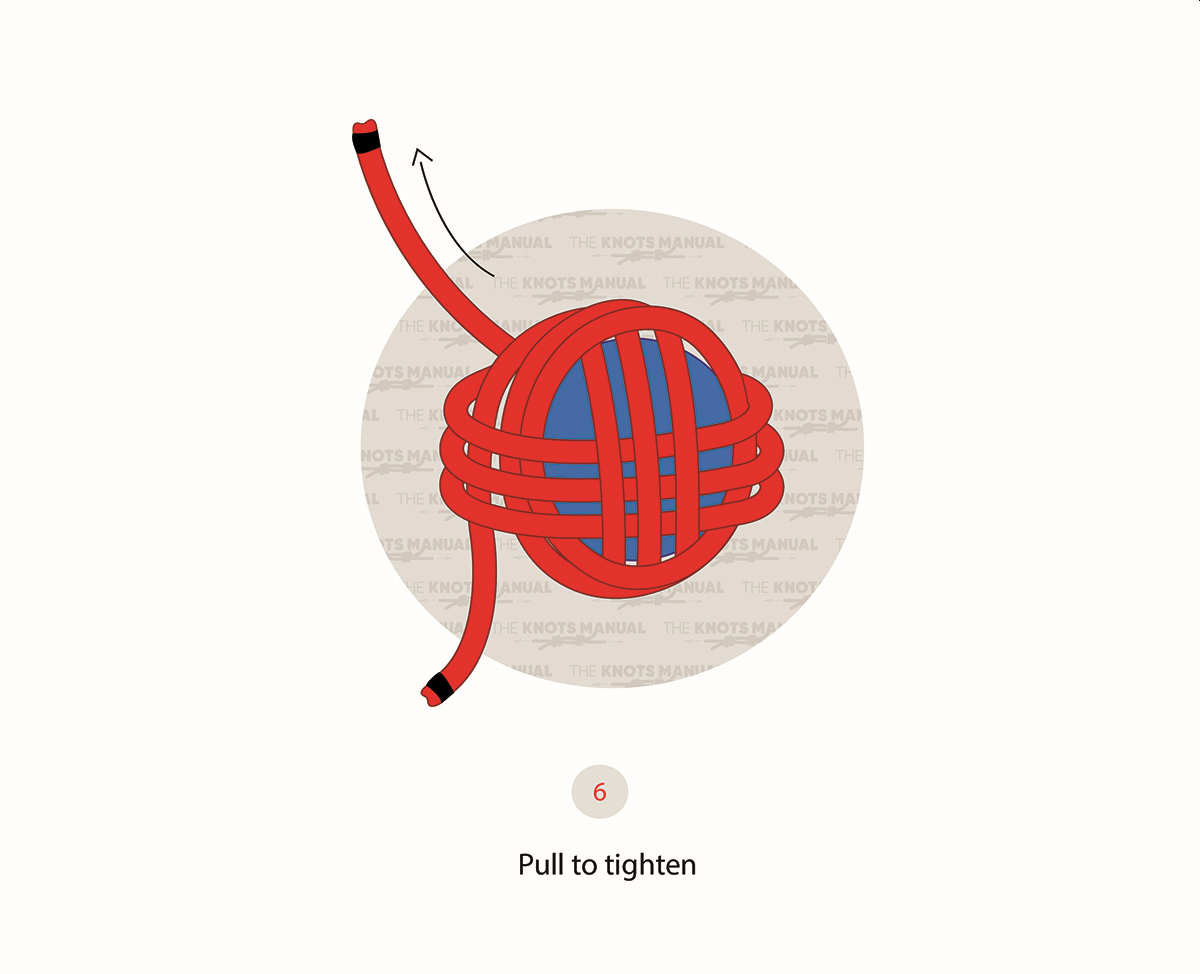
Pull up on the rope’s working end to tighten the knot.
Step 7:
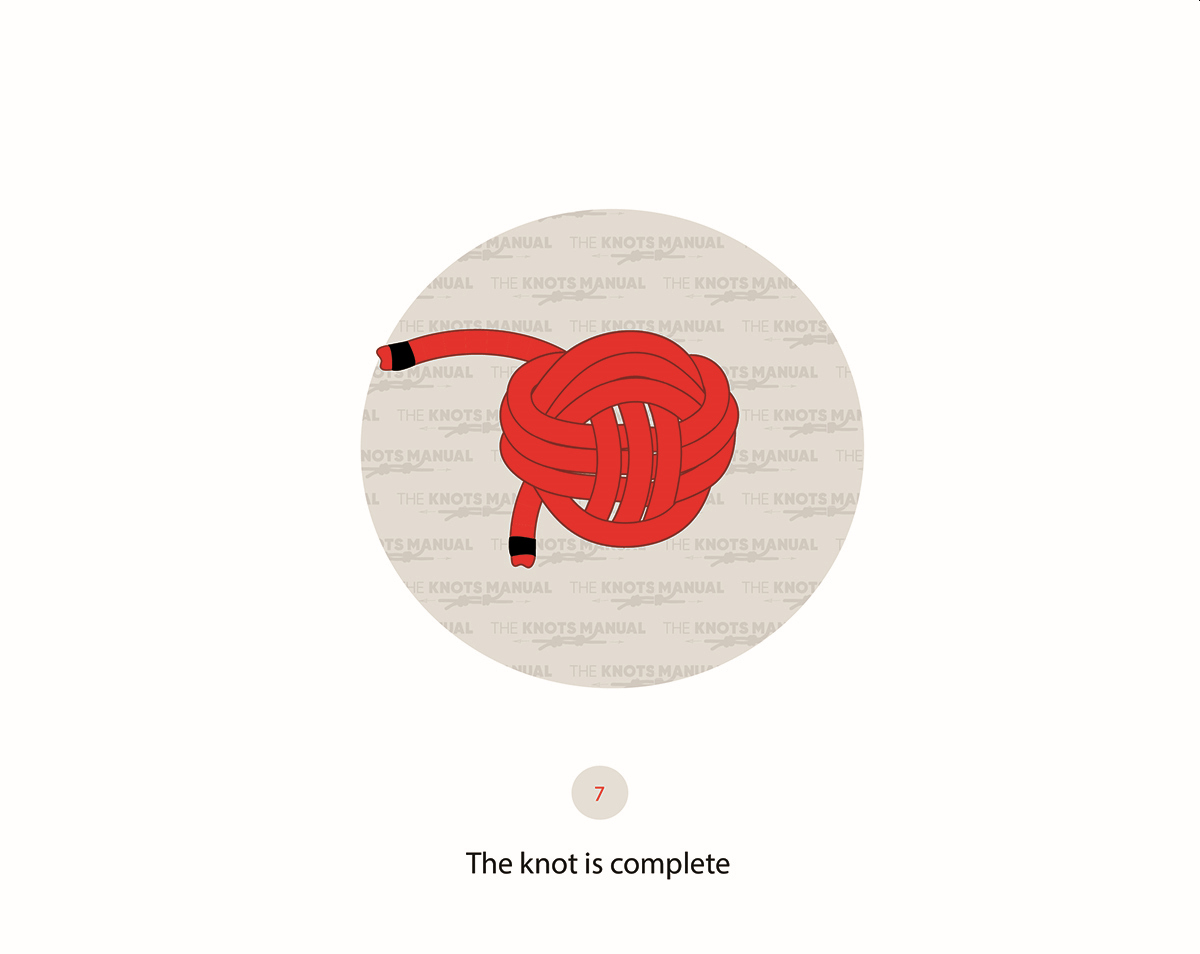
The Monkey’s Fist Knotis is complete.
Supply:
- Paracord
- Hemp
- Leather
Tools:
- Ball (Choose the material that best suits your needs. Steel balls are good for weapons, while marbles are good for keychains.)
- Steel ball
- Golf ball
- Tennis ball
- Marble
Materials: Users will need a lot of rope to make a monkey’s fist knot: at least 4-5 feet.
Finish With A Splice
Users can finish the knot by leaving both ends of the rope outside the knot. The two ends are spliced together; the fist becomes part of the eye splice. Finishing the knot like this allows the monkey fist to be reused for heaving. The second eye splice interlocks with the heaving line’s eye splice to attach the knot to a heaving line.
What Are The Uses Of A Monkey Fist Knot?
Traditionally, monkey knots were used as heaving lines on boats. Today, they are most often used for decorative purposes and sometimes self-defense.
Self-Defense
Monkey knots often make good self-defense weapons. They are excellent, heavy throwing devices and are easily concealable.
Decorative
Monkey paw keychains are popular because users enjoy the look of them. Monkey paw keychains also make easily accessible weapons if the user needs one.
Besides keychains, users can add monkey’s fists to zipper pulls, key fobs, and lanyards.
Monkey knots are trendy in macrame.
Many knot tiers make monkey’s fists with various strands of colored rope. Using different colored ropes makes the knot more aesthetically pleasing.
Some bracelet-makers use miniature monkey fists as closures rather than using traditional clasps. Using these knots to create earrings and necklaces is also common.
Monkey fists make nice nautical decorations. Many place them around the house or at weddings. Users often create knobs, pillows, curtain rods, lamps, and finials with monkey knots.
Some users have even created giant monkey fists using pool balls. These knots are purely decorative and are made for fun.
Ancient Sailing
Monkey’s fish originated on ships hundreds of years ago. Crew members used them as heaving line knots. Sailors would throw the knot from one ship to another. Sailors on both ships would grab either end of the rope and pull the two ships together.
It was best for sailors to split the coil of rope into two sections before throwing a monkey fist. One section would be smaller than the other; crew members would wrap the shorter length in a neat coil. Then, they would throw the small, neat coil; it is easier to throw than the large coil. As it’s being thrown, the rope unravels slightly from both coils.
These knots were often used as a lifeline between ships. Using them was particularly important when one of the ships was struggling.
Monkey’s knots became symbols of solidarity among sailing communities.
Some sailors used monkey fists as melee weapons against other sailors and gangs.
Outdoor Sports
Rock climbers sometimes use monkey fist knots as an anchor. They place the knot between cracks in the rock to make a secure handhold.
Using monkey fist knots for climbing isn’t very common anymore. There are much safer methods, but it was popular in the past.
Monkey fists make good handles for parachuting. They tend to be stronger and more durable than traditional handles.
Some outdoors people add monkey fist knots to their knives. They make it easier to pull the knife quickly from a pocket.
Other Uses
Other uses of the monkey fist knot include:
- DIY ball gag
- Survival
- Doorstops
- Dog toys
- Drawer pull
- Bookmark
- Bookend
- Curtain tie back
- Table number holder
Cautions
Monkey fist knots are often tied around heavy balls or other objects. The added weights make them easier to throw, which was useful when they were used as heaving lines on ships.
Although these weights are useful, they can be dangerous. Sailors were known for cutting the heavy ends off of heaving lines after use to make the ropes easier to work with. Crew members standing below were often hit by the heavy falling objects. Some crew members suffered severe injuries from the falling items.
Knots Similar To The Monkey Fist
Double Monkey Fist Knot: These knots are twice as large as a traditional monkey’s fist. They have 12 faces instead of six, like the traditional monkey’s knot.
Turk’s Head Knot: These are decorative knots. They comprise many interwoven strands to create a loop. Turk’s head knots are often spherical and look similar to monkey fist knots.
Globe Knot: These knots look similar to the monkey fist but have more faces. They are decorative knots that wrap around a ball or similar item.
Alpine Coil Knot: These knots allow climbers to carry a coil of rope on their harness that is ready to use. Use of the rope is quick and easy as it is with the monkey fist knot.
Backup Knot: These knots work as a backup to other knots to prevent them from slipping. They are bulky and use up a lot of rope, resembling the monkey fist knot.
Fireman’s Coil: These knots are useful for keeping a coil of rope under control. They prevent coils from unraveling. Yet, they are easily released with a quick tug of the working end.
FAQs
Is A Monkey Fist Weapon Illegal?
Sailors began using monkey fists as dangerous weapons called “slungshots.” As sailors left their ships after work, thieves and gangs often attacked them. They got creative and began defending themselves with slungshots.
Rather than attaching the knot to a heaving line, sailors would hold onto the eye splice with their hand. Then, they would use the monkey fist as a swinging club. Heavy items sat at the center of these monkey fists. They were often dangerous enough to knock out attackers and break open skulls.
Slungshots continued to develop as weapons as criminals began using them. Some created the knots with hard leather covering a heavy lead weight. Slungshots were the weapon of choice for gangs and criminals. They continued to be so through the late 1800s and 1920s.
Today, the monkey fist is illegal in many places because it can still be used as a weapon. Carrying a slungshot is a felony in California, Massachusetts, Michigan, and Oklahoma. A few states give less severe charges for the possession of the knots.
What Items Can You Use In Place Of A Ball For A Monkey Fist?
Balls are the most popular option for monkey fists. They’re perfectly round and somewhat heavy. Still, they aren’t always needed. Sailors often used heavy rocks instead.
Anything round and solid will work well. Marbles are popular for smaller monkey fists. Users can forego the item for miniature monkey fists and make the knot around their fingers.
